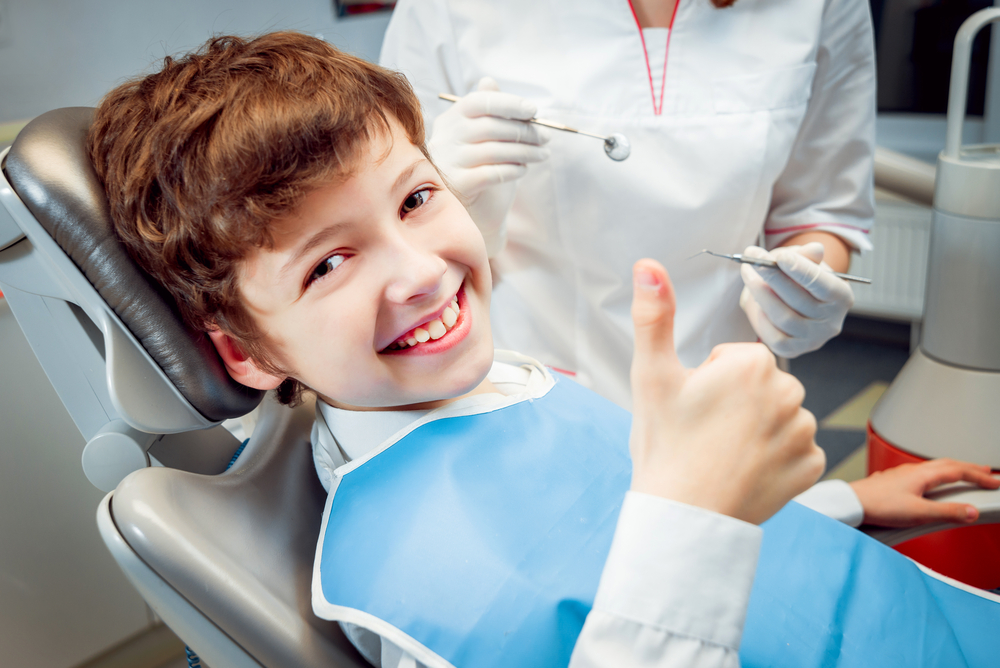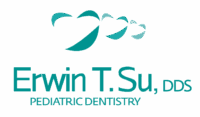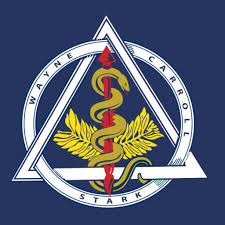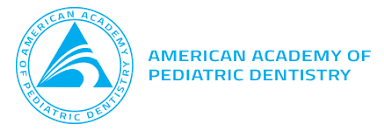FAQs

What is a pediatric dentist?
Pediatric dentists are the pediatricians of dentistry. A pediatric dentist has two to three years specialty training following dental school and limits his/her practice to treating children only. Pediatric dentists are primary and specialty oral care providers for infants and children through adolescence, including those with special health needs.
When should I bring my child to a pediatric dentist?
The American Academy of Pediatric Dentistry recommends that a child’s first visit to the dentist should occur by 12 months of age. This visit will enable the dentist to evaluate your child and introduce you to proper oral hygiene. Diet, fluoride, finger and pacifier habits and tooth eruption will be discussed to insure optimal dental health.
At Dr. Su’s office we see children of all ages from infancy through high school and beyond. Because we specialize in children’s dental health our entire office is designed to make your child’s dental visits as fun and worry-free as possible. It is never too late for your child to enjoy the benefits of a specialized dental office designed for children.
How often does my child need to see the pediatric dentist?
A check-up every six months is recommended in order prevent cavities and other dental problems. However, your pediatric dentist can tell you when and how often your child should visit based on their personal oral health.
How safe are dental X-rays?
With today’s digital technology, there is now little to no risk with dental x-rays. A digital x-ray, which are available in Dr. Su’s office, reduces the amount of radiation by 90% versus traditional x-rays.
How Should I Care For My Child’s Teeth?
Begin brushing as soon as the first tooth erupts. For infants, use a clean washcloth to gently wipe plaque from teeth and gums and avoid putting children to bed with a bottle filled with anything other than water. Fluoride toothpaste can be used after the child is old enough not to swallow it. Children age four and five should be able to brush their own teeth twice a day with parental help. To ensure proper brushing, parents should help supervise brushing until the child is seven years or even older.
How can parents help prevent tooth decay?
Dental decay can be prevented by limiting the intake of sugary foods and other snack foods. Also, sugary beverages should be limited to prevent tooth decay. Good brushing should be done at least twice a day as soon as the first tooth erupts. Parents should take their children to the dentist regularly, beginning with the eruption of the first tooth or by 12 months of age. At the very least, your child should have a dental visit by 24 months of age. At the first visit, Dr. Su will review dietary habits and guidelines to help insure that your child can grow up cavity free.
What should I use to clean my baby’s teeth?
A toothbrush will remove plaque bacteria that can lead to decay. Any soft-bristled toothbrush with a small head, preferably one designed specifically for infants, should be used at least once a day at bedtime.
Are baby teeth really that important to my child?
Primary, or “baby,” teeth are important for many reasons. Not only do they help children speak clearly and chew naturally, they also aid in forming a path that permanent teeth can follow when they are ready to erupt.
What should I do if my child has a toothache?
First, rinse the irritated area with warm salt water and place a cold compress on the face if it is swollen. Give the child acetaminophen for any pain, rather than placing aspirin on the teeth or gums. Finally, see your pediatric dentist as soon as possible.
Are thumbsucking and pacifier habits harmful for a child’s teeth?
Thumb and pacifier sucking habits will generally only become a problem if they go on for a very long period of time. Most children stop these habits on their own, but if they are still sucking their thumbs or fingers past the age of three, a mouth appliance may be recommended by your pediatric dentist.
How can I prevent decay caused by nursing?
Avoid nursing children to sleep or putting anything other than water in their bed-time bottle. Also, learn the proper way to brush and floss your child’s teeth. Take your child to a pediatric dentist regularly to have his/her teeth and gums checked. The first dental visit should be scheduled by your child’s first birthday.
Toothpaste: when should we begin using it and how much should we use?
The sooner the better! Starting at birth, clean your child’s gums with a soft infant toothbrush or cloth and water. As soon as the teeth begin to appear, start brushing twice daily using fluoridated toothpaste and a soft, age-appropriate sized toothbrush. Use a “smear” of toothpaste to brush the teeth of a child less than 2 years of age. For the 2-5 year old, dispense a “pea-size” amount of toothpaste and perform or assist your child’s toothbrushing. Remember that young children do not have the ability to brush their teeth effectively. Children should spit out and not swallow excess toothpaste after brushing.
How do I make my child’s diet safe for his teeth?
Make sure your child has a balanced diet, including one serving each of: fruits and vegetables, breads and cereals, milk and dairy products, and meat fish and eggs. Limiting the servings of sugars and starches will also aid in protecting your child’s teeth from decay. You can also ask your pediatric dentist to help you select foods that protect your children’s teeth.
How do dental sealants work?
Sealants work by filling in the crevasses on the chewing surfaces of the teeth. This shuts out food particles that could get caught in the teeth, causing cavities. The application is fast and comfortable and can effectively protect teeth for many years.
How do I know if my child is getting enough fluoride?
Have your pediatric dentist evaluate the fluoride level of your child’s primary source of drinking water. If your child is not getting enough fluoride internally through water (especially if the fluoride level is deficient or if your child drinks bottled water without fluoride), then your pediatric dentist may prescribe fluoride supplements.
What can I do to protect my child’s teeth during sporting events?
Soft plastic mouthguards can be used to protect a child’s teeth, lips, cheeks and gums from sport related injuries. A custom-fitted mouthguard developed by a pediatric dentist will protect your child from injuries to the teeth, face and even provide protection from severe injuries to the head.
What should I do if my child falls and knocks out a permanent tooth?
The most important thing to do is to remain calm. Then find the tooth. Hold it by the crown rather than the root and try to reinsert it in the socket. If that is not possible, put the tooth in a glass of milk and take your child and the glass immediately to the pediatric dentist.





